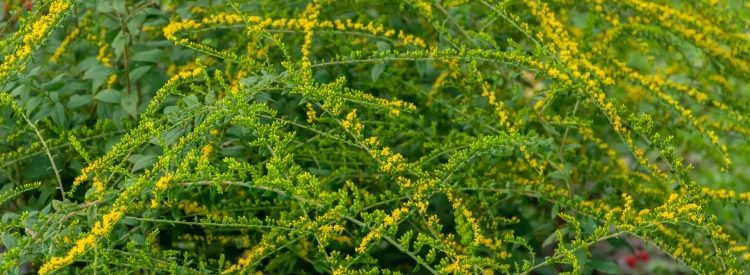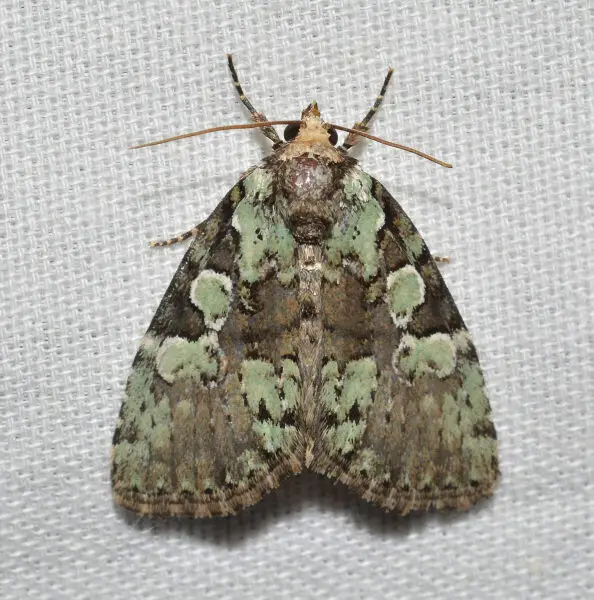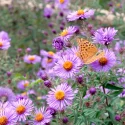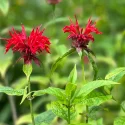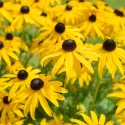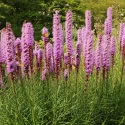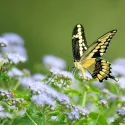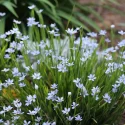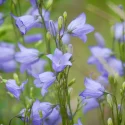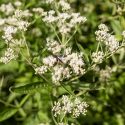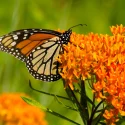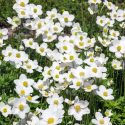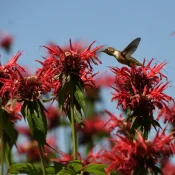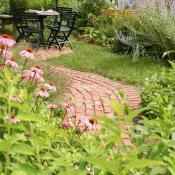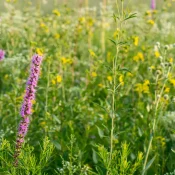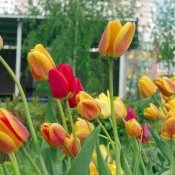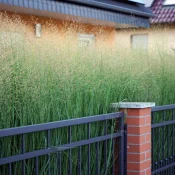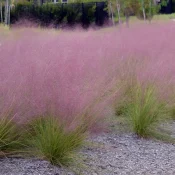First—let’s get the facts straight: goldenrod is NOT what causes fall allergies. (The plant that causes allergies is ragweed.) There are 75 species of goldenrod native to the United States, offering an option for every American garden. No matter the species, goldenrod’s specialty is delivering jaw-droppingly gorgeous flowers at the end of the growing season. Plant some goldenrod and watch the pollinators go crazy—especially in the fall when they desperately need it. Scroll below to meet some favorites.
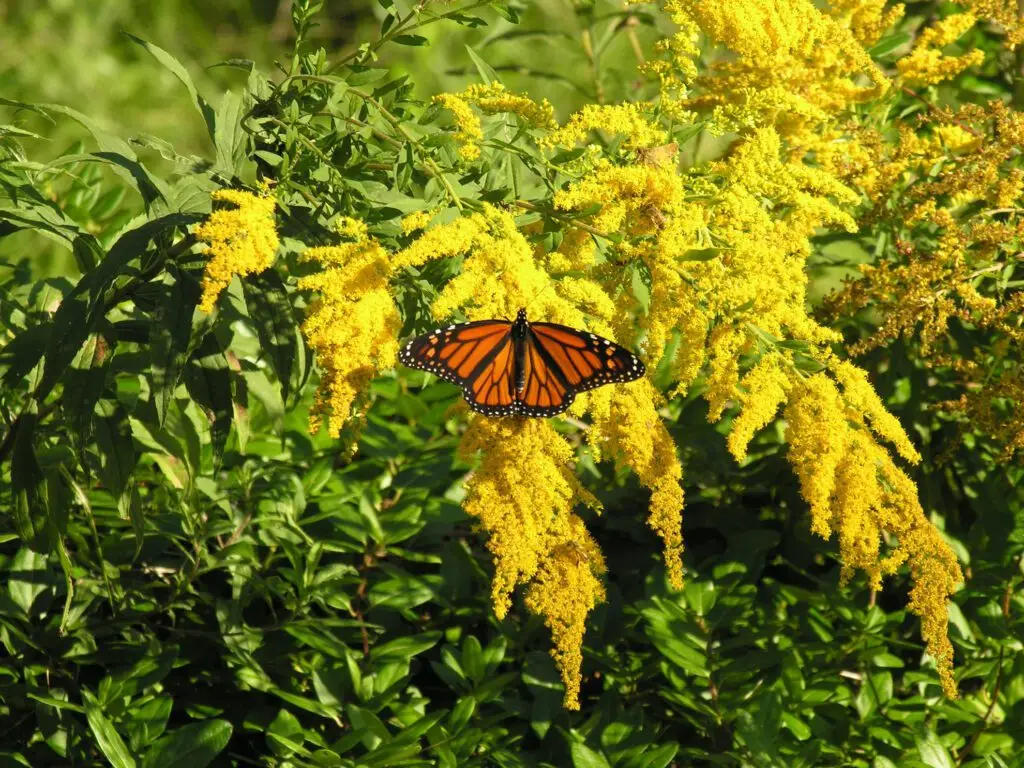
Goldenrod is a super easy to grow native flower with 75 different species to consider. No matter where you live in the United States, there is a goldenrod for you. Goldenrods are perennials—plant once and they come back year after year. In this article, we’ll share some fuss-free species alongside tips for planting.
Why is it important to plant native plants like goldenrod?
Planting native plants makes our yards and spaces gorgeous while helping the birds, butterflies, and animals (and helping save us time.) Here is what native goldenrod delivers:
- Time and money savings. After the first year of getting established, native plants like goldenrod are happy with normal rainfall.
- Resilient, fuss-free beauty. Goldenrod is a perfect example of how beautiful and resilient native plants are—they are always the best choice for our gardens.
New to native?
Before lawns and landscaping, native plants were here. They’ve fed birds, bees, and butterflies for thousands of years—and they’ll do the same in your yard. The best part? They’re easier to grow than you think.
And a few more benefits to planting goldenrod…🦋
Native goldenrods are host plants
A host plant is a specific plant that a butterfly or moth lays its eggs on, and its caterpillars eat. Without host plants, these iconic animals would not survive.
Native goldenrods are host plants to 126 species of butterflies and moths—yes, that is the correct number! Planting native goldenrod ensures that our gardens and landscapes look amazing and that wildlife has the food and homes they need to thrive.
Goldenrods help all these butterflies and moths!
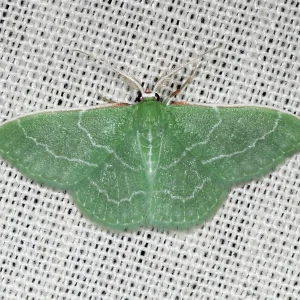
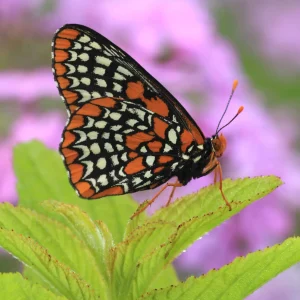
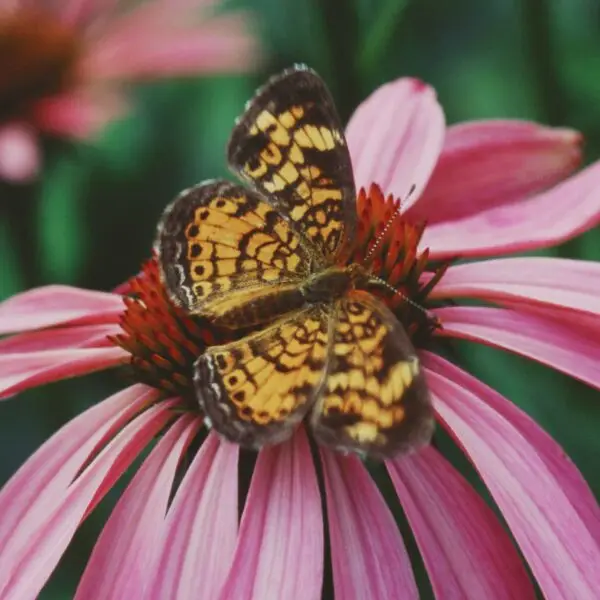
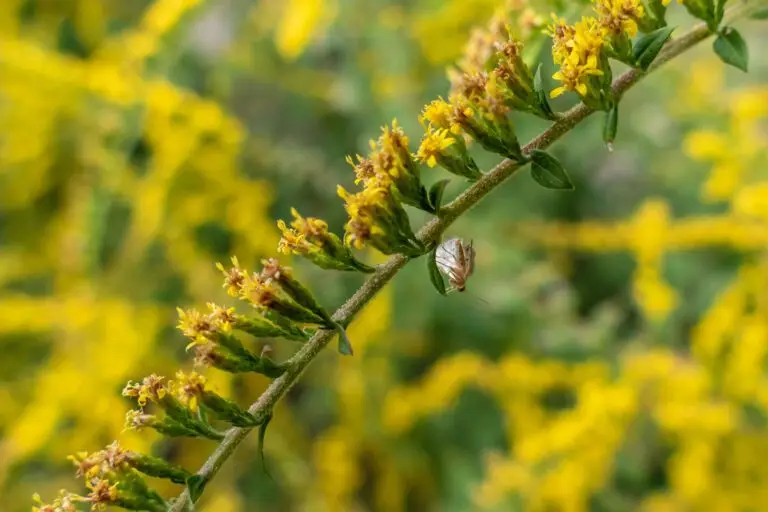
Now that we’ve covered some benefits, let’s meet some native goldenrod species.
Native goldenrod species
There are 75 species of goldenrod native to North America. Here several species commonly found in local native plant nurseries.
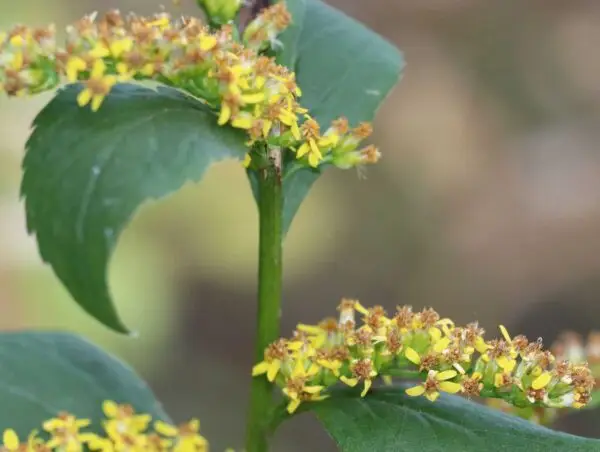
Blue-Stemmed Goldenrod
Solidago caesia
A goldenrod for shade! The flowers appear on little platforms from the stalk—it’s a singular, memorable shape.
- 1-3 feet tall
- Shade to part shade
- Flowers in late summer/fall
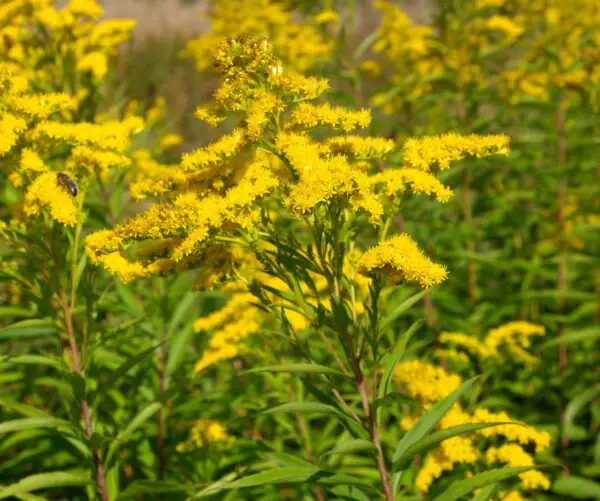
Canada Goldenrod
Solidago canadensis
This is the ‘classic Goldenrod’ you see in fields and sides of highways. It’s everywhere since it spreads so easily via its roots. This is good news when you have a large area to fill! If you have a smaller garden, you can cut the stems in July to keep it shorter.
- 2-5 feet
- Full sun to part sun
- Late summer/early fall flowers
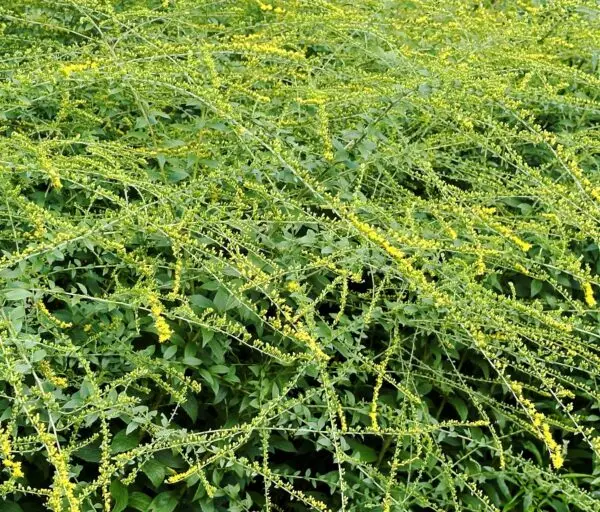
Early Goldenrod
Solidago juncea
Such a stunning plant; flowers cascade down like star trails. Super easy to grow and exceptionally photogenic.
- 1.5-3 feet
- Sun to partial sun, drought-tolerant
- Flowers in the mid to late summer
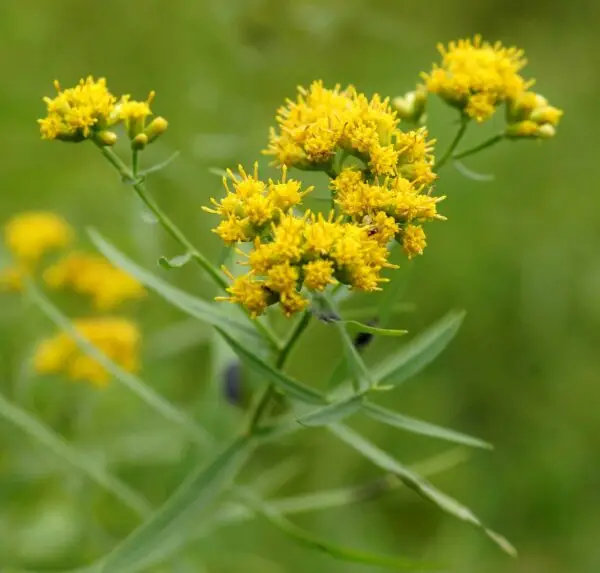
Grass-leaved Goldenrod
Euthamia graminifolia
A delicate Goldenrod, thanks to its needle-shaped leaves. This is a great plant for beginner gardeners: it thrives in a wide range of soil (wet to dry).
- 1.5-3 feet tall
- Full sun
- Drought-tolerant, summer bloom time
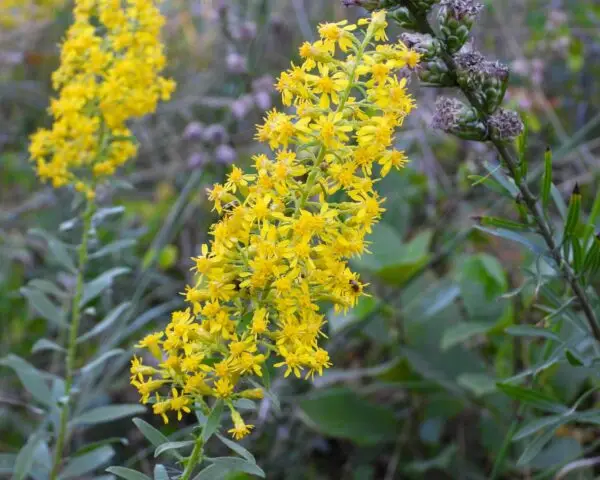
Showy Goldenrod
Solidago speciosa
Clumps of tiny yellow flowers create a showstopper moment. Another great plant for beginner gardeners; it thrives in a wide range of soil (wet to dry).
- 1-5 feet tall
- Full sun
- Drought-tolerant, late-summer/fall bloom time
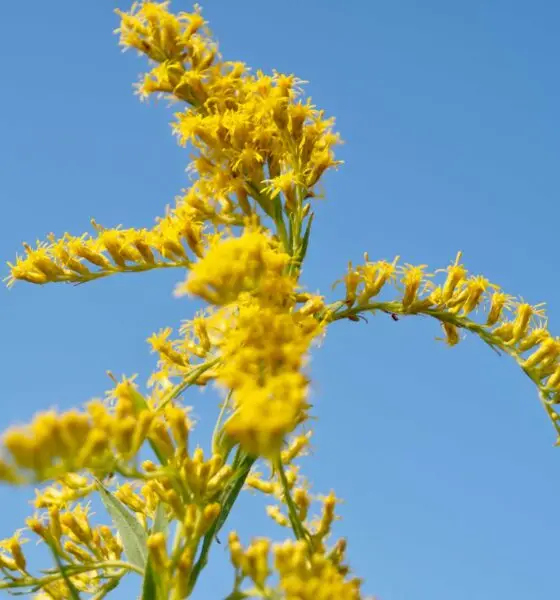
Tall Goldenrod
Solidago altissima
Similar to Canada Goldenrod, it spreads quickly via rhizomes.
- Be warned: this plant is TALL—3-7 feet. It can look like a small tree at its tallest.
- Full sun
- Late summer/fall bloom, drought-tolerant
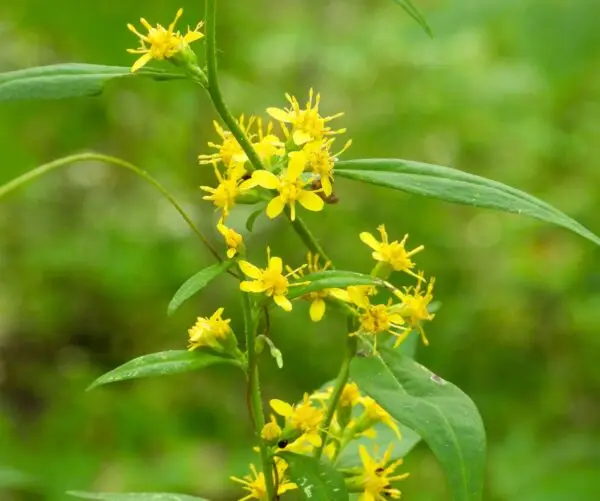
Zig-Zag Goldenrod
Solidago flexicaulis
What a fun shade plant! Tiny yellow flowers jut out from a zig-zagged stem in the fall.
- 1-3 feet
- Shade to part-shade
- Late summer/fall bloom, drought-tolerant
And that’s not all…
We just touched the tip of the iceberg with these seven goldenrod varieties. A few other notable goldenrod species include…
- Stiff Goldenrod (Solidago rigida) has flowers on wide top
- Seaside Goldenrod (Solidago sempervirens) thrives along beaches
What are good Goldenrod pairings?
Goldenrod likes full sun or part sun areas. Pair it with other native plants that flower both at the end of the season—like native asters—along with spring and summer flowers, like Bee Balm, Coneflower, Joe Pye Weed, and Mountain Mint. And don’t forget to plant the monarch butterfly host plant: Milkweed.
Planting flowers that bloom throughout the season is the best way to plan a pollinator garden.
Native flowers for spring
Native flowers for summer
Other native flowers for fall
Let’s all plant goldenrod in our gardens to enjoy a late-season flower show and offer crucial food to migrating monarch butterflies on their migration south. Goldenrod is exceptionally easy to grow, and 75 native species offer lots of options for American gardens.
Spread the word—goldenrod is NOT the allergy monster (that’s ragweed.) Maybe it’s time for a new lawn sign? Visit some of our other guides to garden favorites, including our Beginner’s Guide to Coneflowers and Beginner’s Guide to Native Lilies. Happy planting!
Sources
- D’Aurora, Denise. “Goldenrod: Not Just Another Pretty Face,” Pennsylvania State Extension, 2023.
- Diaz, Rob. “Bang for Your Caterpillar Buck: Which Plants Host the Most?” The WFSU Ecology Blog, October 23, 2023.
- Harstad, Carolyn. Go Native! Gardening with Native Plants and Wildflowers in the Lower Midwest. (1999), 209-210.
- Wexler, Mark. “Worth Their Weight in Gold: Belying a bad reputation, goldenrods do not trigger allergies—but do benefit pollinators,” National Wildlife Federation, 2017.
- Cape Conservation Corps. “Spotlight on Native Host Plants: Two Powerhouse Perennials.” Capeconservationcorps.org, April 13, 2020.
- National Wildlife Foundation. “Plant Information – Native Plants Finder,” 2015.
- National Wildlife Foundation. “Wildlife Information – Native Plants Finder,” 2015.
- Native Plant Trust. “Solidago Caesia.” New England Wild Flower Society, 2025.
- United States Department of Agriculture. “Seaside Goldenrod: Solidago Sempervirens L.,” n.d.
- North Carolina Extension Gardener Plant Toolbox. “Solidago (Goldenrod, Golden Rod),” 2021.
What if your feed was actually good for your mental health?
Give your algorithm a breath of fresh air and follow us.
